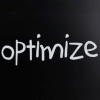RL Blogs

By Patrick the Process Engineer
Mar 07, 2016Process Unit monitoring is as much art as it is science. |
||||
| Most process engineers inherit a process monitoring spreadsheet that may have been built years ago. A lot has changed since the early days of spreadsheets. But has your process monitoring spreadsheet changed?
If your spreadsheet simply mirrors the sequential arrangement for flow through the unit, you may not be getting as much out of your process monitoring spreadsheet as it can deliver.
Steps to Improve Process Unit Monitoring
“Hello my name is” No one spends more time in an operating unit or staring at the operating conditions of a process unit than the unit operators. Spending time with the process operators will allow anyone trying to improve process monitoring to better understand the critical process variables.
Mass and Heat Balance Good process monitoring starts and ends with good mass and heat balances around every piece of equipment (distillation columns, reactors, and heat exchangers).
Pressure is as Pressure Does Companies make money by creating products from the feed of operating units. Tracking and analyzing the pressure profile of an operating unit can lead to energy savings and throughput efficiencies.
Organize better than Ikea There are thousands of variables in most operating units. Simply dumping all the variables into a massive spreadsheet doesn’t leverage the full capability of process monitoring.
Build a spreadsheet or database that leverages the most technology as possible. Someone back at university forgot to tell undergraduate chemical engineers to learn VBA which could be as important as fluid flow (not really but close). The next few sections will help divide up the spreadsheet into manageable chucks.
On Test versus Off Test In the tracking spreadsheet, organize the feed and product process information based on critical feed properties and product properties.
Subdivide the properties into critical yield, reliability, and clearance specifications. This will help you focus the communication of deviations to the correct downstream teams. For instance the metallurgy engineer doesn’t care if diesel cetane is off test.
as DEA loading ratios or reactor temperature profiles. Another good idea is to use this section to tie unit economics to unit performance.
Keep things from breaking Build a section that focuses on reliability issues such as salt concentration, pH, and line velocity. This will quickly and efficiently allow a chemical engineer to communicate with a reliability engineer.
This is a good section to focus communication with local reliability teams. Each side will be astonished with what the other doesn’t know about their business. Leverage this opportunity to close that knowledge gap.
Waste not want not Utility systems are often forgotten and neglected by process engineers. Build a section that allows you to better understand the steam, water chemistry, and utility chemical requirements of your “friendly” NALCO representative.
I find it comical how many refineries rely on an outside contractor to tell them when something this critical needs attention and how much money to spend on it.
Control This Process engineers should think of themselves as “wanna be” process control engineers. If you don’t know how the DMC or other control systems are moving the unit then you don’t really know what’s going on in the process unit.
Your process monitoring spreadsheet should track all the control & manipulated variables (set points included). Use this as the discussion point for the board operators and control engineers.
Time keeps on clicking It may be generational, but convert all this data into visuals. People can understand a graph much easier than a table of data. But, be smart about your graphics. Build the graphics in such a manner to highlight relationships over time in a clean crisp fashion.
Cause and Effect If you really want to show people information they can really use then build your graphics package around relationships not just time.
For instance, if you’re really concerned about coker coke yield then maybe build a tracking relationship that has resid conrad carbon on the X-axis and coke yield on the Y-axis. This sort of information is really powerful when communicating effects on changing operating conditions and for improving the refinery LP model.
Following these simple ideas about improving process monitoring will allow a process engineer to fully drive the most value from a process unit. | ||||
|











